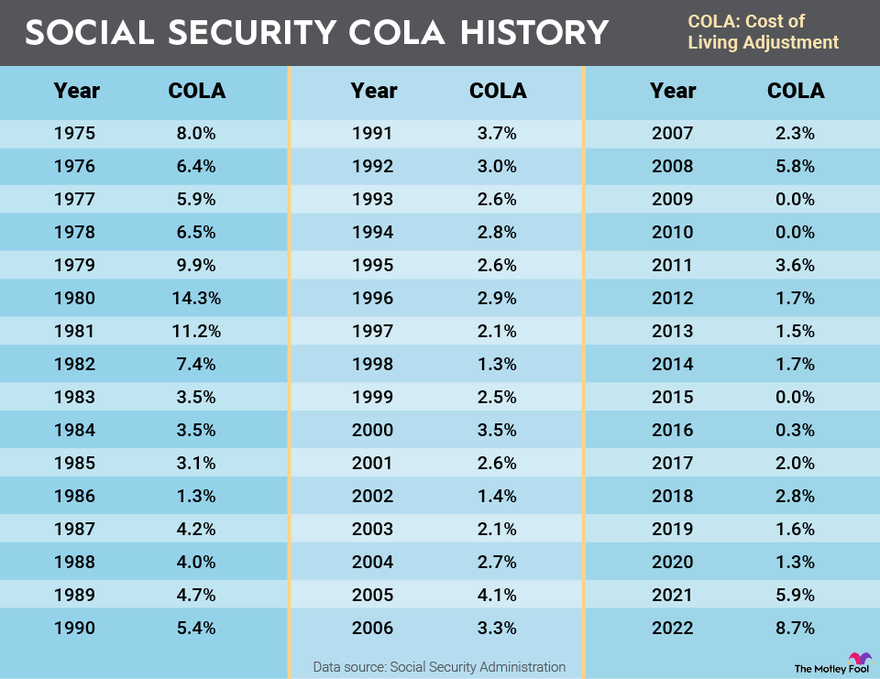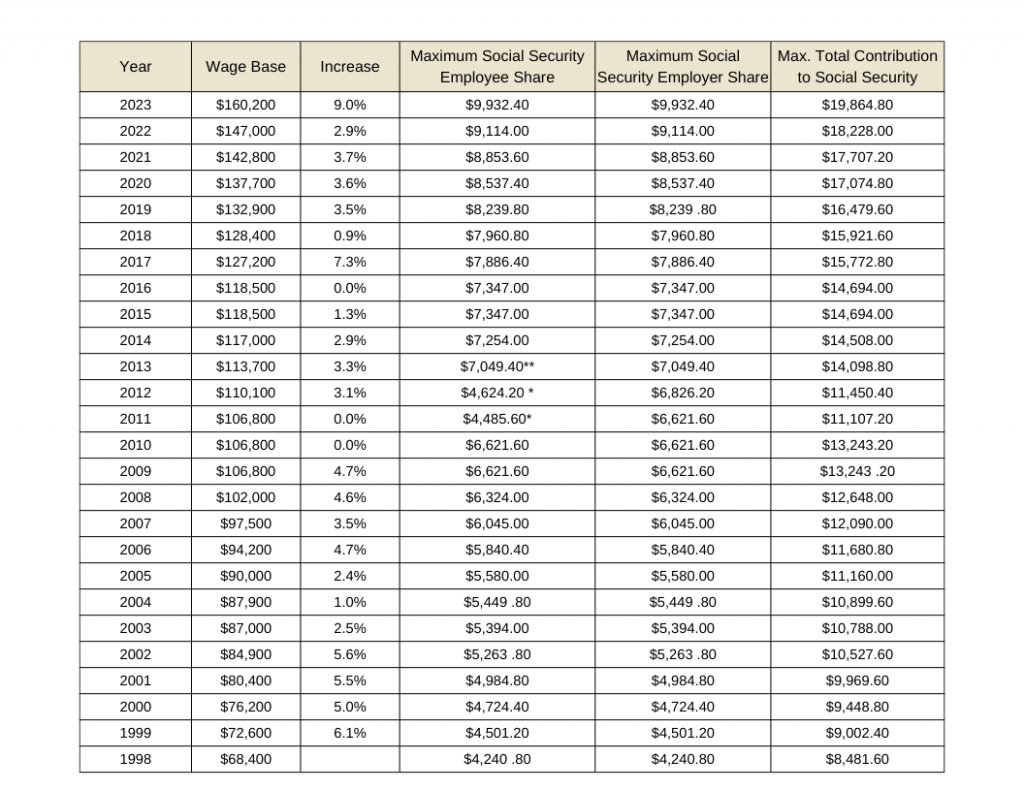Understanding the 2025 Social Security COLA Increase

The 2025 Social Security Cost of Living Adjustment (COLA) is a crucial factor for millions of Americans who rely on these benefits for their financial security. The COLA increase aims to protect the purchasing power of Social Security benefits against the rising cost of living, ensuring that beneficiaries can maintain their standard of living.
Factors Influencing the COLA Calculation
The Social Security Administration (SSA) uses a specific formula to calculate the annual COLA increase. This formula considers the Consumer Price Index for Urban Wage Earners and Clerical Workers (CPI-W), which measures the average change in prices for a basket of goods and services commonly purchased by urban wage earners and clerical workers.
The COLA is calculated by comparing the CPI-W for the third quarter of the current year to the CPI-W for the third quarter of the previous year. The percentage increase in the CPI-W over this period determines the COLA increase.
Historical Overview of COLA Increases
The COLA increase has been a vital component of Social Security since its inception. It has helped to ensure that beneficiaries receive a steady income that keeps pace with inflation.
Here’s a historical overview of past COLA increases and their impact:
- 1975: The first COLA increase was implemented in 1975, with a 5.9% increase in benefits. This marked a significant step in protecting beneficiaries from inflation and ensuring their purchasing power.
- 1980s: The 1980s saw a period of high inflation, and Social Security benefits were adjusted accordingly. The COLA increase in 1980 was 14.3%, reflecting the significant price increases of that era.
- 2000s: The early 2000s saw a period of relatively low inflation, leading to smaller COLA increases. However, the 2008 financial crisis resulted in a significant 5.8% COLA increase in 2009 to help beneficiaries cope with the economic downturn.
The impact of COLA increases has been significant for millions of Americans. It has helped to maintain their standard of living, protect them from inflation, and provide financial stability during challenging economic times.
Future Outlook and Implications: 2025 Social Security Cola Increase

The 2025 Social Security COLA increase provides a snapshot of the current situation, but it’s crucial to understand the long-term trends and challenges facing the program. This section will explore the projected trajectory of Social Security benefits and COLA increases beyond 2025, analyzing the potential impact of economic and demographic changes on the system. It will also identify potential policy solutions and recommendations for addressing the long-term challenges facing the program.
Projected Trends in Social Security Benefits and COLA Increases, 2025 social security cola increase
Understanding the future of Social Security benefits and COLA increases requires considering several key factors. These factors include the program’s financial health, projected economic growth, and anticipated changes in demographics. The Social Security Trustees’ report provides valuable insights into these projections.
The Social Security Trustees’ report projects that the program’s trust funds will be depleted by 2034, at which point benefits will need to be reduced by approximately 20% if no changes are made to the system.
This projection highlights the urgency of addressing the long-term financial sustainability of Social Security. The projected trends in benefits and COLA increases are directly linked to the program’s financial health and the ability to maintain current benefit levels.
Impact of Economic and Demographic Changes
Economic and demographic changes have a significant impact on the Social Security system. Economic growth affects the program’s revenue stream, while demographic shifts influence the number of beneficiaries and workers contributing to the system.
Economic Growth
The rate of economic growth influences the amount of payroll taxes collected, which are the primary source of funding for Social Security. Periods of strong economic growth typically lead to higher tax revenues, while periods of economic recession or stagnation can reduce tax revenues.
The Social Security Trustees’ report projects that the U.S. economy will grow at an average annual rate of 1.6% over the next 75 years. This rate of growth is below the historical average, which could lead to slower growth in Social Security revenue.
Demographic Shifts
The aging of the U.S. population is a key demographic trend that impacts Social Security. As the baby boomer generation retires, the number of beneficiaries receiving Social Security benefits will increase, while the number of workers contributing to the system will decline.
The Social Security Trustees’ report projects that the ratio of workers to beneficiaries will fall from 3.3 to 2.0 over the next 75 years. This means that there will be fewer workers contributing to the system for each beneficiary receiving benefits.
Potential Policy Solutions
Addressing the long-term challenges facing Social Security requires a multifaceted approach that considers both revenue and expenditure adjustments. Several potential policy solutions have been proposed, including:
- Raising the retirement age: Gradually increasing the retirement age for full Social Security benefits could help to extend the program’s solvency. This approach would require workers to contribute for a longer period before becoming eligible for benefits.
- Increasing payroll taxes: Raising the Social Security payroll tax rate or expanding the taxable wage base could generate additional revenue for the program. However, such measures could also have negative economic consequences.
- Reducing benefits: Adjusting benefit formulas or reducing the amount of benefits paid could help to balance the program’s finances. However, this approach would have a significant impact on the financial security of retirees.
- Investing Social Security funds in the stock market: Allowing Social Security funds to be invested in the stock market could potentially generate higher returns than the current system, which primarily invests in U.S. Treasury bonds. However, this approach would also expose the program to greater risk.
Recommendations
Developing a comprehensive solution to the long-term challenges facing Social Security requires careful consideration of the potential trade-offs and the impact on different groups. It is important to prioritize solutions that are both sustainable and equitable.
- A gradual and phased approach: Implementing changes gradually over time can help to minimize the impact on individuals and the economy.
- A focus on long-term sustainability: Policy solutions should prioritize the long-term financial health of the program to ensure its ability to provide benefits to future generations.
- A balance between revenue and expenditure adjustments: Addressing the program’s challenges requires a combination of measures to increase revenue and reduce expenditures.
- Transparency and public engagement: The public should be informed about the challenges facing Social Security and involved in the policy-making process.
2025 social security cola increase – The 2025 Social Security cost-of-living adjustment (COLA) is a hot topic, with many seniors anxiously awaiting the news. While the exact percentage remains unknown, the impact on their monthly checks will be significant. Imagine the frustration of having your carefully planned budget disrupted by a sudden ground stop at all NYC airports, as experienced recently due to a weather event – ground stop nyc airports.
Just as those delays cause ripple effects across travel plans, the COLA increase will ripple through the lives of millions of retirees, affecting their ability to afford essentials and maintain their quality of life.
The 2025 Social Security cost-of-living adjustment (COLA) is a hot topic for many, as it directly impacts their monthly income. While many focus on the financial implications, it’s important to consider how the extra money can be used for comfort and convenience.
Imagine enjoying a leisurely picnic or a quiet afternoon reading in the park, comfortably seated on a folding chair with table attached , a perfect example of how the 2025 COLA can be put to good use. The extra funds can help purchase items that enhance your everyday life, bringing a touch of joy and practicality to your routines.
